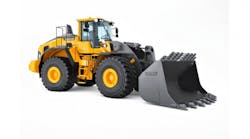In one of the best signs of a rental industry rebound, foot traffic was up and buying was brisk at The Rental Show in Atlanta last month. Almost every vendor I spoke with there — and I tried to visit as many as possible — said that buying was up considerably compared to the past few years. Hopefully, that's a sign of good things to come for the rental market.
Timing was certainly right. The economy is improving and many companies clearly need to replenish aging fleets.
A similar atmosphere was evident the previous week in Orlando at the World of Concrete show. More oriented toward end users and less known as a buying show, quite a few manufacturers were surprised at how many orders they took on the show floor. And most of the contractors at that show were optimistic about the quantity and quality of jobs they had coming up. I was also pleasantly surprised by the amount of interesting new products at both shows, showing that the spirit of innovation continues to thrive in our industry.
I also heard a lot of discussion about lead times. Remember the long lead times that made availability a major problem for manufacturers and their rental customers in the late '90s? Remember how that gave way to concern over what to do with surplus inventory in the early part of this decade, and how manufacturers were closing plants, cutting down on production and laying off production workers? Now once again manufacturers are talking about lead times of three or four months and I heard more than one manufacturer say they were essentially booked between now and the rest of the year just to fill their orders. That's a different kind of problem and one that must be addressed, but it's obviously preferable to the opposite alternative.
But before we get too euphoric, there were some other concerns discussed on the show floor. One was the price of steel, which affects a high percentage of manufacturers. As one said, there isn't much on this show floor that doesn't use steel, and some products are almost all steel. I heard estimates that the price of steel would go up as much as 30 to 50 percent for some construction equipment manufacturers, many of whom are worried about how to absorb those costs at a time when margins are already much squeezed.
Will manufacturers be able to pass those costs along to rental companies that have suddenly opened their wallets to buy new equipment? Will rental companies be able to pass those costs along to their end-user customers? Ken Simonson, chief economist of the Associated General Contractors of America, recently reported the following: “The cost of steel for one bridge project has risen by $15 million since the contract was signed. Few construction companies can afford to absorb cost jumps of that size. I worry that these price spikes are going to cause bankruptcies and job losses.” Prices have also recently jumped for copper, wood products, natural gas, asphalt and diesel fuel.
As many industry participants looked ahead to this year, I heard so many say that the economy was about to grow, that the downturn was past, that only unforeseen events such as the complications of war or terrorist attacks could derail it. I'm not sure if the prices of steel and other resources qualify as an unforeseen event of that magnitude, but judging by the amount of conversation devoted to it at the recent shows, it's far from a minor matter.
A manufacturing downturn would be a serious problem at a time when we continue to see so many good manufacturing jobs shipped overseas, when so many manufacturing communities look like Bruce Springsteen songs about shut-down factories leading to boarded-up storefronts and the broken lives of hard-working people who can't find productive work.
I'm not sure what the answer is to the issues of steel prices or domestic manufacturing, or how to provide good jobs. But as much as I wish it otherwise, I don't think we're out of the economic woods quite yet, despite the positive signs we're currently seeing.


